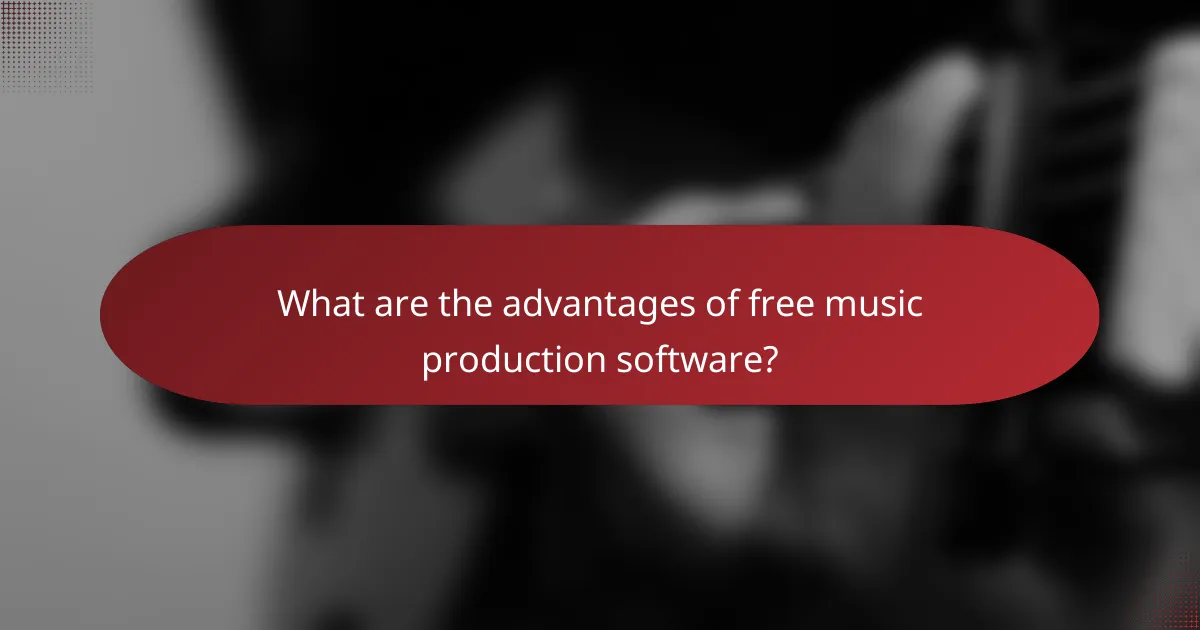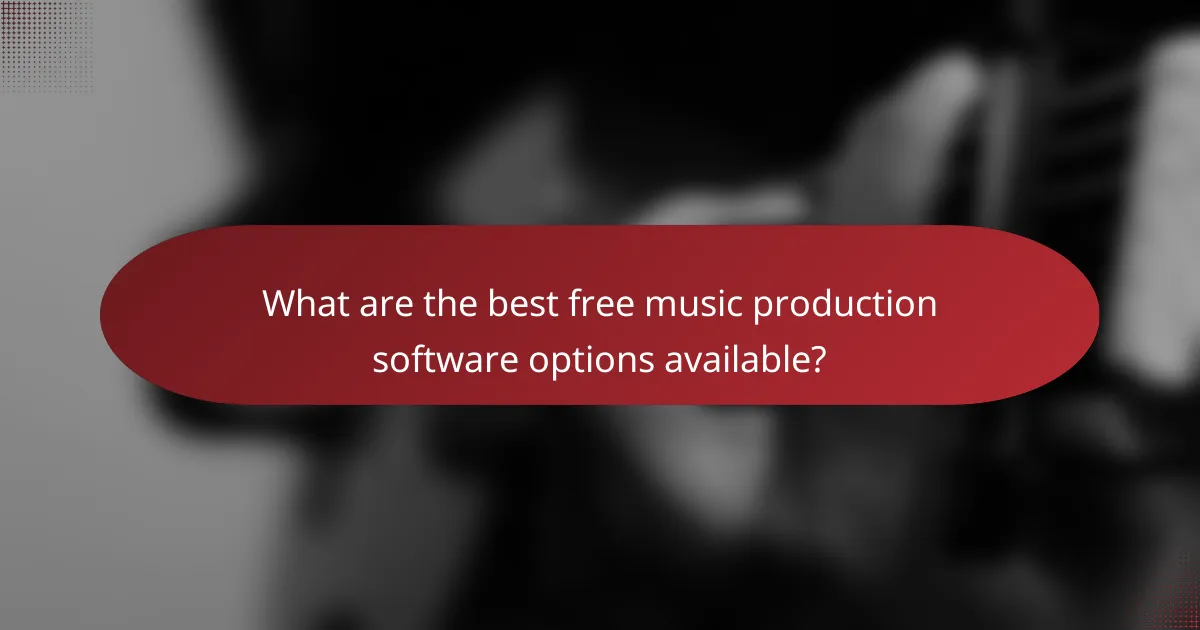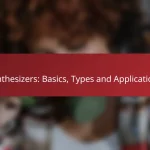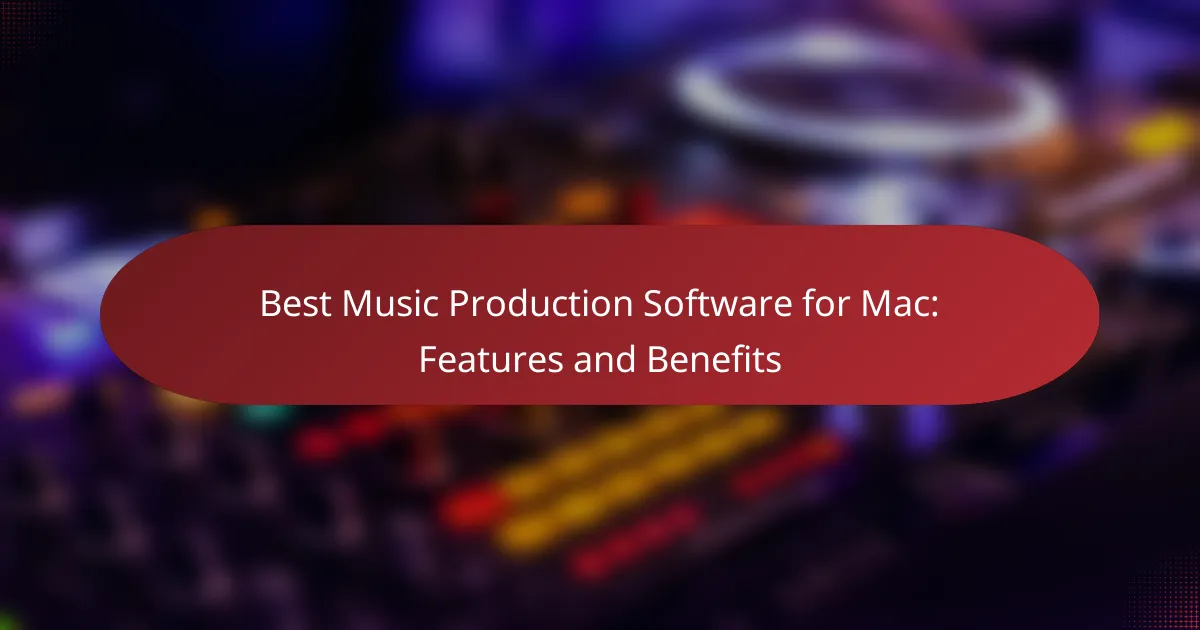Free music production software presents an attractive opportunity for both novice and seasoned producers, offering significant cost savings and access to a variety of creative tools. However, potential users should be aware of the limitations that may come with these programs, such as restricted features and varying audio quality. Exploring popular options like Audacity, GarageBand, and Tracktion T7 can help you find the right fit for your music production needs.

What are the advantages of free music production software?
Free music production software offers several benefits, including cost savings, access to diverse tools, and strong community support. These advantages make it an appealing option for beginners and experienced producers alike.
No financial investment required
The most significant advantage of free music production software is that it requires no financial investment. This accessibility allows aspiring musicians and producers to experiment without the pressure of purchasing expensive software.
Many free options provide essential features that can meet the needs of beginners. By starting with free software, users can develop their skills and determine if they want to invest in premium tools later on.
Access to a variety of tools
Free music production software often comes with a wide range of tools and features that can enhance creativity. Users can find programs that include virtual instruments, effects, and mixing capabilities, allowing for a comprehensive production experience.
Some popular free software options include Audacity, Cakewalk, and GarageBand, each offering unique features that cater to different styles and needs. This variety enables users to explore different genres and production techniques without financial constraints.
Community support and resources
Free music production software typically has a strong community of users who share tips, tutorials, and resources. This support network can be invaluable for beginners looking to learn and improve their skills.
Online forums, social media groups, and video tutorials are often available, providing users with easy access to help and inspiration. Engaging with the community can lead to valuable feedback and collaboration opportunities, enhancing the overall learning experience.

What are the disadvantages of free music production software?
Free music production software often comes with several drawbacks that can impact the quality and efficiency of your music creation process. Users may encounter limitations in features, audio quality, and customer support, which can hinder their overall experience.
Limited features compared to paid software
Free music production software typically offers fewer features than its paid counterparts. Users might find essential tools like advanced mixing options, high-quality virtual instruments, or extensive sound libraries missing. This limitation can restrict creativity and the ability to produce professional-sounding tracks.
For example, while some free software may allow basic recording and editing, they might lack advanced features like MIDI editing, automation, or support for third-party plugins. This can lead to a more cumbersome workflow and less flexibility in music production.
Potential for lower audio quality
Another disadvantage of free music production software is the potential for lower audio quality. Many free options may not support high sample rates or bit depths, which can affect the clarity and richness of the final product. This is particularly important for genres that rely heavily on intricate sound design.
Users may notice a difference in audio fidelity when comparing tracks produced with free software to those made with professional-grade tools. This can be a significant drawback for musicians aiming for a polished sound suitable for commercial release.
Less customer support
Free music production software often comes with limited or no customer support. Users may have to rely on community forums or online tutorials for troubleshooting, which can be time-consuming and frustrating. This lack of direct assistance can hinder progress, especially for beginners who may encounter technical issues.
In contrast, paid software typically offers dedicated customer service, including live chat or phone support, which can be invaluable when facing challenges during the music production process. Without this support, users may find it difficult to resolve issues quickly, potentially stalling their projects.

What are the best free music production software options available?
The best free music production software options include Audacity, GarageBand, and Tracktion T7. Each of these tools offers unique features suitable for different types of music production, catering to beginners and more experienced users alike.
Audacity
Audacity is a popular open-source audio editing software that is widely used for recording and editing sounds. It supports various audio formats and provides a range of features such as multi-track editing, effects, and plugins.
One of the key advantages of Audacity is its simplicity and ease of use, making it ideal for beginners. However, it may lack some advanced features found in paid software, which could limit its appeal for professional music production.
GarageBand
GarageBand is a free digital audio workstation available exclusively for macOS and iOS users. It offers a user-friendly interface and a wide array of virtual instruments, loops, and effects, making it a great choice for music creation.
GarageBand is particularly advantageous for those who are already part of the Apple ecosystem, as it integrates seamlessly with other Apple applications. However, its availability is limited to Apple devices, which may exclude some potential users.
Tracktion T7
Tracktion T7 is a free version of a professional-grade digital audio workstation that provides a comprehensive set of features for music production. It includes unlimited audio and MIDI tracks, a range of built-in effects, and support for third-party plugins.
This software is suitable for both beginners and experienced producers, offering a more advanced experience compared to other free options. However, the learning curve may be steeper for those new to music production, requiring some time to explore its capabilities fully.

How to choose the right free music production software?
Choosing the right free music production software involves assessing your skills, understanding your production needs, and ensuring compatibility with your hardware. By focusing on these key factors, you can find a suitable option that enhances your music creation experience.
Consider your skill level
Your skill level significantly influences which free music production software will work best for you. Beginners might prefer user-friendly interfaces with basic features, while more experienced users may seek advanced functionalities and customization options.
For instance, software like GarageBand is great for novices due to its intuitive design, while programs like Cakewalk or Audacity offer more depth for those with some experience. Assess your comfort with music production to guide your choice.
Evaluate your production needs
Identifying your production needs is crucial in selecting the right software. Consider what type of music you want to create and the specific features you require, such as MIDI support, audio recording capabilities, or built-in effects.
If you’re focused on electronic music, software like LMMS may be ideal, while those interested in recording live instruments might prefer something like Tracktion T7. Make a list of essential features to help narrow down your options.
Check compatibility with your hardware
Compatibility with your hardware is essential to ensure smooth operation of the software. Check the system requirements for each program and ensure it runs on your operating system, whether it’s Windows, macOS, or Linux.
Additionally, consider the hardware you have, such as audio interfaces or MIDI controllers, and verify that the software supports these devices. This will prevent potential issues and enhance your overall music production experience.

What are the common features of free music production software?
Free music production software typically includes essential features like multi-track recording, audio editing tools, and built-in virtual instruments. These functionalities enable users to create, edit, and produce music without the need for expensive equipment or software.
Multi-track recording
Multi-track recording allows users to record multiple audio sources simultaneously or in layers. This feature is crucial for creating complex compositions, as it enables the mixing of different instruments and vocals on separate tracks.
When using free software, look for options that support at least 8 to 16 tracks, which is usually sufficient for most home studio projects. Be mindful of the software’s performance; some may struggle with larger track counts, leading to latency or crashes.
Audio editing tools
Audio editing tools are vital for refining recorded tracks. Common features include cut, copy, paste, and fade options, as well as effects like reverb and compression. These tools help enhance the overall sound quality and ensure that the final product meets professional standards.
Many free music production programs offer intuitive interfaces for audio editing, but the depth of features can vary. Check for options that allow for precise editing, such as waveform visualization and automation capabilities, to improve your workflow.
Built-in virtual instruments
Built-in virtual instruments provide users with a range of sounds without needing external hardware. These instruments can include synthesizers, drum machines, and samplers, allowing for diverse musical styles and experimentation.
When selecting free software, consider the variety and quality of virtual instruments available. Some programs may offer a limited selection, while others provide extensive libraries that can significantly enhance your music production experience.










